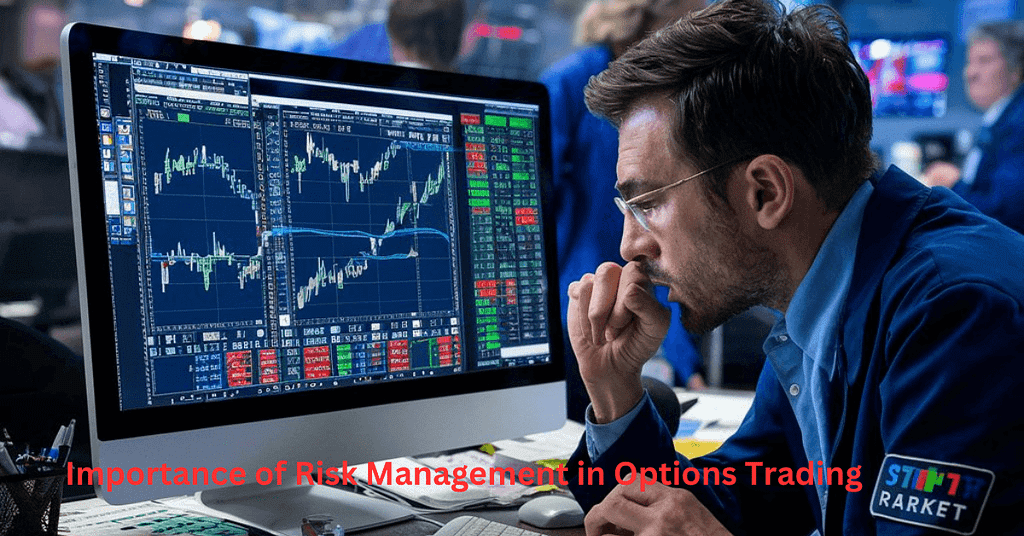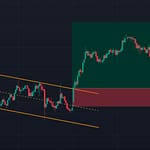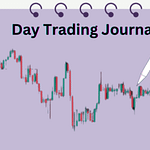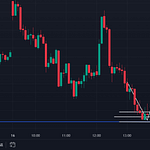
Risk management is important in options trading as it helps traders protect their capital and minimize losses. Option trading can be risky due to factors like market volatility, time decay and unexpected events. Without proper risk management strategies, traders can suffer significant losses that can lead to the loss of their investment capital.
By implementing effective risk management techniques, traders can better navigate market uncertainties and increase their chances of long-term success.
In this blog post, we will explore the importance of risk management in options trading. We will discuss the common risks involved in options trading, such as market risk, volatility risk, and time decay. We will explore various strategies for effective risk management, including setting clear objectives, diversification, position sizing, using stop-loss orders, and hedging.
Importance of Risk Management
1. Protecting capital:
The primary goal of risk management
Imagine you have a bucket of water and make sure you don’t spill it. This is a little bit of what it means to protect capital in options trading. Your capital is like that water – you want to put it to work, and you want to keep it as long as you can.
Risk management helps you do this by ensuring that you don’t take too much risk in any one trade. If you put too much water in the bucket, it will spill and you will do some damage.
Likewise, if you invest too much money in a risky trade without managing it properly, you can lose a lot of your capital. Protecting your capital means making sure you don’t take on more risk than you can handle, so you can keep the business going and have enough money left over to try again if things don’t go your way.
2. Minimizing losses:
How effective risk management strategies can help mitigate losses?
Nobody likes to lose money, right? This is where it is possible to minimize losses. Risk management helps you do everything you can to avoid major losses in your trades. Just as wearing a seatbelt in a car helps protect you in the event of an accident, risk management strategies act as a safety net for your investment.
For example, setting a stop-loss order is like having a safety line – if the trade starts going against you, the stop-loss order automatically kicks in and stops the loss from getting bigger.
By using risk management strategies like these, you can limit losses if a trade doesn’t go as you expected. It’s all about protecting yourself from big losses so you can continue trading the next day.
3. Maximizing profits:
How risk management enable traders to optimize returns over time?
Now, let’s talk about making money – because that’s why we’re here, right? Risk management is not just about avoiding losses; It’s also about seizing your opportunities. Think of it this way: if you’re playing a game, you want to score as many points as possible while playing it safe. In options trading, risk management helps you do just that.
By carefully managing your risk, you can position yourself to take advantage of market opportunities without risking too much of your capital. This means you can aim for consistent, sustainable profits over time instead of trying to hit a home run with every trade.
It’s about playing the long game and steadily growing your wealth rather than gambling everything on one big win. With effective risk management, you can maximize your profits while keeping your capital safe.
Common Risks in Options Trading
1. Market risk:
Impact of overall market movements on options prices
Think of the market as a big ocean and option prices are like a boat floating on the waves. Market risk is like the wind and currents that can push those boats around. When the overall market goes up or down, it also affects options prices. If you have a call option (which allows you to buy a stock at a certain price) and the market suddenly falls, the value of the option may decrease because it is now less likely that the stock will reach that high price.
Similarly, if you have a put option (which allows you to sell the stock at a certain price) and the market rises, the value of the option may decrease because the stock is less likely to fall to a lower price. Market risk is an option that traders always have to consider because it is like a tide that can lift or sink all boats in a harbor.
2. Volatility risk:
Influence of volatility changes on options values
Volatility is like the weather – it can change quickly and unpredictably. Volatility risk in options trading is how those changes in volatility can affect options prices. When the market gets all jittery and starts moving a lot, that’s high volatility. And when things are calm and stable, it is less volatile.
The thing is, when volatility is high, option prices go up because there is more uncertainty and the possibility of bigger moves. But when volatility decreases, option prices can go down because those big swings are less likely. So, just as you want to carry an umbrella when the weather looks stormy, options traders need to be prepared for changes in volatility and how they may affect their trades.
3. Time decay:
Understanding the concept and implications of time decay (Theta)
Time ticks like a ticking clock – it always works against you in options trading. Here’s how it works: Options contracts have expiration dates, and as time passes, the value of those contracts decreases. This is because the closer an option gets to its expiration date, the less time the underlying asset needs to move in that direction for the option to be profitable.
Therefore, even if the stock price remains the same, the option’s value may decrease as time passes. Time decay is an option traders need to keep in mind because it’s like a leaky bucket – if you don’t pour more water (by moving the stock in the right direction), eventually, it will dry out.
4. Liquidity risk:
Challenges associated with trading illiquid options contracts
Imagine trying to sell a rare baseball card – if not many people are interested in buying it, you may have trouble finding buyers. Options trading is similar to liquidity risk – it’s all about how easy it is to buy or sell options contracts without much impact on their prices.
Options with high liquidity have many buyers and sellers, so it is easy to enter and exit trades quickly. But options with low liquidity are like rare baseball cards – there aren’t many buyers or sellers, so you’ll have to wait a while to find someone willing to trade with you, and you might not get as good a price.
Liquidity risk is something that traders need to be aware of as it can affect how easily they can execute their trades and the prices they can get.
5. Event risk:
Unforeseen events and their potential impact on options positions
Life is full of surprises – and so is the market. Event risk in options trading is about the unexpected things that can happen and completely wipe out your trades. This could be anything from a sudden change in government policy to a natural disaster to a surprise earnings report from a company. These events can cause big moves in the market that no one saw coming and can have a huge impact on options prices.
For example, if a company announces unexpectedly good earnings, the stock price may increase, which may increase the call option value on that stock. But if the company delivers bad news, the stock price will fall, causing the put options to skyrocket.
Event risk is something traders always have to be prepared for because it’s like a movie plot – you never know what’s going to happen next.
Strategies for Effective Risk Management
1. Setting clear objectives:
Establishing goals and risk tolerance levels before trading
Setting clear goals is like having a roadmap before going on a trip. Before you start trading options, it’s important to know where you want to go and how much risk you’re willing to take to get there. This means deciding what you want to achieve from your trade – whether it is to make a certain amount of profit, protect your capital or something else.
You also need to understand how much risk you are comfortable with. Are you okay with taking a big risk for the chance of a big reward, or do you prefer to play it safe and stick to low-risk trades? By setting clear objectives and risk tolerance levels in advance, you can make better decisions about which trades to take and how to manage them.
2. Diversification:
Spreading risk across different underlying assets and strategies
Diversification is like not putting all your eggs in one basket. Rather than betting everything on a single trade or asset, diversification means spreading your risk across a variety of investments. This can mean trading options on different stocks, commodities or indices, or using a mix of different option strategies.
By diversifying your portfolio, you can reduce the impact of any one trade or asset that performs poorly. If one trade doesn’t go as planned, hopefully, the others will balance it out. Diversification is a key risk management strategy as it helps protect your capital and increases the likelihood of consistent returns over time.
3. Position sizing:
Determining the appropriate allocation of capital for each trade
Position sizing is like deciding how much of your money to put into each trade. Just like you wouldn’t bet your entire savings on a single hand of blackjack, you shouldn’t risk too much of your capital on any one options trade.
Position sizing involves calculating the optimal amount of money to invest in each trade based on factors like your overall portfolio size, risk tolerance, and the specific risk/reward profile of the trade. By sizing your positions appropriately, you can avoid taking on too much risk and ensure that no single trade has the power to wipe out your entire account if it goes wrong.
4. Using stop-loss orders:
Implementing predefined exit points to limit losses
Stop-loss orders are like safety nets for your trades. A stop-loss order is a predetermined exit point that you set when you enter a trade. If the trade starts going against you and reaches that exit point, the stop-loss order will automatically trigger, closing the trade and limiting your losses.
It’s like having a built-in insurance policy that kicks in if things don’t go as planned. Stop-loss orders are an essential risk management tool as they help you control your downside risk and protect your capital against big losses.
5. Hedging:
Using correlated assets or options contracts to offset potential losses
Hedging is like buying insurance for your transactions. When you hedge, you take another position that is designed to offset potential losses from your primary trade. For example, if you are long in a stock, you can buy a put option on that stock to protect yourself against a potential downturn.
Similarly, if you are shorting a stock, you can buy a call option as a hedge if the stock price goes up instead of down. Hedging can help you reduce your overall risk and provide peace of mind knowing you are protected against adverse market movements.
6. Adjusting strategies:
Adapting risk management approaches based on market conditions
Finally, it is important to be flexible and adapt your risk management strategies to changing market conditions. Just as a captain adjusts his sails to navigate changing winds, options traders must adjust their risk management strategies to navigate changing market conditions.
This may mean reducing your position size during periods of high volatility, increasing your hedging activity when uncertainty is high, or tightening your stop-loss level in bearish markets. By being nimble and adjusting your strategy as needed, you can better protect your capital and increase your chances of success in any market environment.
Tools and Resources for Risk Management
1. Options calculators:
Utilizing online tools to analyze potential risks and returns
Options calculators are like super power calculators specially designed for option traders. These online tools help you analyze the potential risks and returns of various options strategies before trading. With an options calculator, you can input details like the underlying asset price, strike price, expiration date, and volatility, and the calculator will crunch the numbers to show you things like profit potential, potential loss, and potential return.
It’s like having a crystal ball that can help you see into the future and make more informed trading decisions. Options calculators are invaluable tools for options traders because they take the guesswork out of planning your trades and help you understand potential outcomes before committing your money.
2. Volatility indicators:
Monitoring implied volatility levels to gauge risk exposure
Volatility indicators are like weather forecasters for the market. They help you gauge how much risk you are willing to take based on the level of volatility in the market. Implied volatility is a measure of how much the market expects the price of the underlying asset to fluctuate in the future. By monitoring the level of implied volatility, you can get a sense of how much risk is in the market at any given time. For example, if implied volatility is high, it means there is a lot of uncertainty and the possibility of large price increases, which can increase your risk.
On the other hand, if the implied volatility is low, it means the market is relatively calm and stable, which can reduce your risk. Volatility indicators are essential tools for option traders as they help you adjust your risk management strategies according to current market conditions.
3. Risk management software:
Overview of specialized software for options traders
Risk management software is like having a personal assistant for your trades. This specialized software is specially designed for option traders and helps you manage your risk more effectively. Risk management software typically includes features such as portfolio analysis, position sizing tools, risk assessment calculators, and trade simulation capabilities.
Some software also offer advanced analytics and risk modeling tools to help you identify potential risks and opportunities in the market. By using risk management software, you can streamline your trading workflow, reduce manual errors, and make more informed decisions about how to manage your risk. It’s worth having a powerful ally in your corner to help you navigate the complexities of options trading.
4. Educational resources:
Recommendations for books, courses, and websites on risk management in options trading
Education is like the foundation of a house – it is essential to build a solid understanding of options trading and risk management. There are numerous books, courses and websites available that provide valuable insight and practical guidance on risk management in options trading. These educational resources cover topics such as options basics, advanced trading strategies, risk management techniques and market analysis.
Whether you’re a beginner looking to learn the basics or a seasoned trader looking to improve your skills, there are plenty of educational resources available to help you succeed. By investing time in education and training, you can gain the knowledge and confidence you need to effectively manage risk and achieve your trading goals.
Ultimately, risk management is like a safety net for options traders, helping them navigate market uncertainties and protect their capital. We have seen how risk management strategies like setting clear objectives, diversification, position sizing, using stop-loss orders, hedging and adjusting strategies help traders minimize losses and maximize profits over time. Without effective risk management, traders are more susceptible to significant losses that could jeopardize their trading efforts.
As we wrap up, it’s important to remember that options trading carries inherent risk and there is no foolproof strategy for guaranteed success. However, by implementing proper risk management practices and being disciplined in your approach, you can tilt the odds in your favor and increase your chances of long-term profits.
Each of the strategies discussed – from setting clear goals to using risk management tools – plays an important role in helping traders navigate the complexities of the options market and achieve their trading goals.
Finally, I would like to encourage all readers to make risk management a priority in their options trading endeavors. While it may not be the most exciting aspect of trading, effective risk management is the foundation upon which successful trading strategies are built.
By taking the time to understand and implement the principles of risk management, you can better protect your capital, minimize losses during downturns, and ultimately increase your chances of long-term success in the dynamic world of options trading. Remember, the goal is not just to make money, but to preserve and grow your capital over time – and risk management is key to achieving that goal.
You may also like read:
How Stop Loss Trailing Helps Ride Profits in Options Trading?






